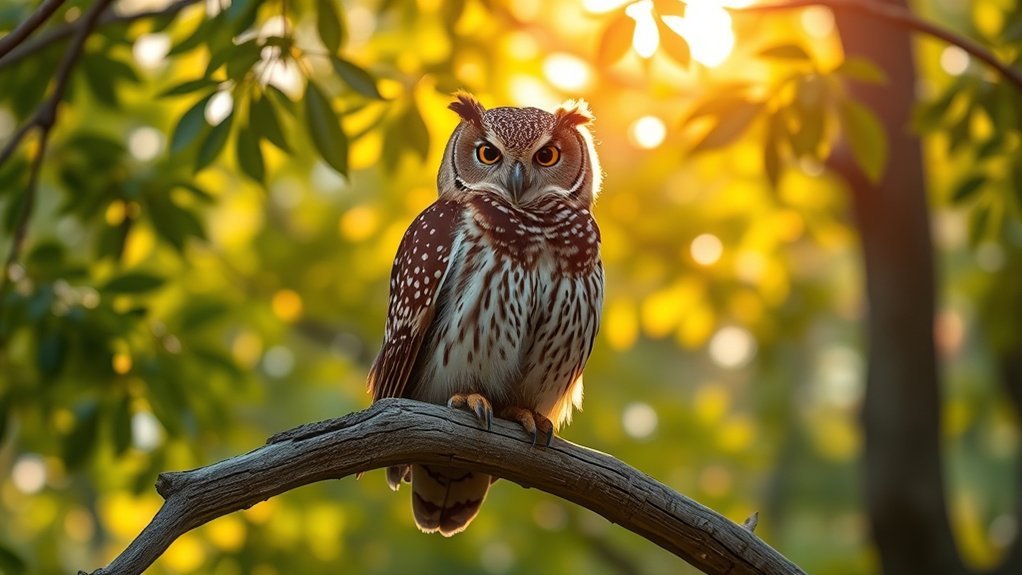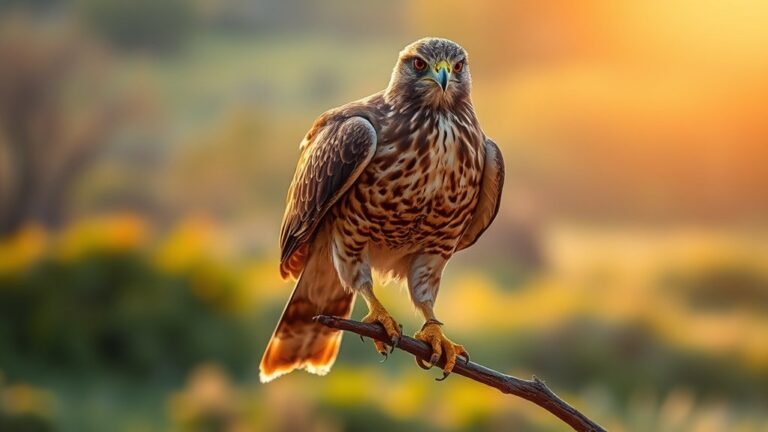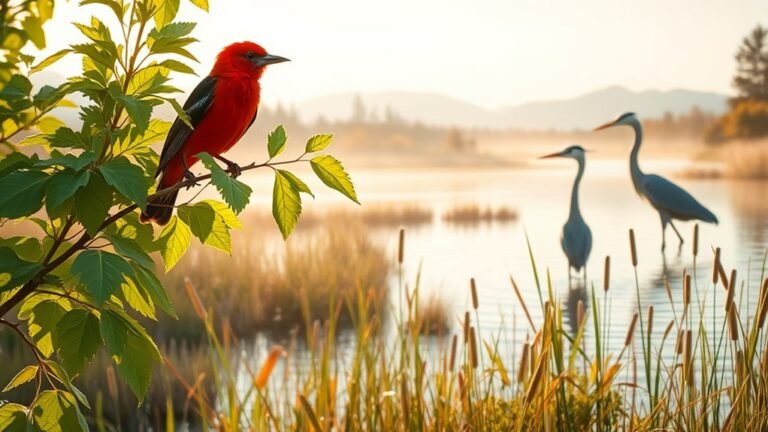Owls Found in North Carolina: Species Overview
North Carolina is home to many types of owls, each one special in its own way. These owls live in different places and act in different ways. For example, the Barred Owl has a unique call that sounds like "Who cooks for you?" The Barn Owl is quiet when it hunts, making it a skilled predator.
Owls help keep nature balanced by controlling small animal populations. But they face big problems, like losing their homes due to development and other changes in the environment.
To protect these amazing birds, we need to take action. We can create safe spaces for them to live, keep their habitats healthy, and educate others about their needs. By caring for owls, we also care for our environment. Let's work together to ensure that these beautiful creatures thrive in North Carolina for many years to come!
A Quick Overview
North Carolina has many types of owls. Here are some you might see:
- Barred Owls like to live in old woods near water. They have a special hooting call that makes them easy to recognize.
- Great Horned Owls can live in different places. They have tufted "horns" on their heads and are strong hunters.
- Eastern Screech Owls make a trilling sound. They like to stay in woodlands, parks, and even suburbs.
- Barn Owls are quiet when they fly. They help keep pests away in open fields.
- Spotted Owls need old-growth forests to build their nests and feel safe.
Owls are fascinating birds that each have their own special traits. Keep an eye out for them next time you're outdoors!
Barred Owl

The Barred Owl is a cool bird that makes a unique hooting sound in the forests of North Carolina.
These owls live in many different places, but they really like old woods close to water, like swamps or streams. They often make their homes in tree holes or in old nests that other birds have left behind.
If you watch a Barred Owl, you'll notice something interesting. They're friendly with their partners and sometimes sing together, but they also want to protect their space from other owls.
During the day, you can find them resting on branches. They've sharp eyesight, which helps them look for food.
Learning about where Barred Owls live and how they act can help you enjoy these amazing birds even more as you explore the forests.
Great Horned Owl
The Great Horned Owl is a powerful bird known for its tufted "horns" and bright yellow eyes. In North Carolina, this owl is a top predator. It can live in many places, like forests, fields, and even cities, where it can find good hiding spots.
You can often see these owls sitting high in trees or in big holes in the trunk. They're very aware of their territory.
Great Horned Owls are great hunters. They can hear really well and see in the dark, which helps them find food. Their flight is silent, so they can sneak up on small animals like mice and birds. When they're close enough, they use their strong talons to catch their prey.
Learning about the Great Horned Owl helps us understand how important it's to our environment in North Carolina.
Eastern Screech Owl

The Eastern Screech Owl has a wingspan of about 18 to 24 inches. This owl is easy to find in North Carolina, where it lives in many places like woodlands, parks, and even suburbs.
It likes to make its home in tree cavities, which helps it live in both city and country settings.
When night comes, you can hear the Eastern Screech Owl's unique calls. Their trilling and whistling sounds fill the air and create a magical nighttime vibe.
Listening to these calls can help you feel more connected to nature and appreciate all the wildlife around you.
Spotting an Eastern Screech Owl is exciting! It adds joy to your day and helps you connect with North Carolina's lively ecosystem.
Barn Owl
The Barn Owl is a stunning bird that flies quietly through the night sky. It likes open places like grasslands and fields where it can hunt easily.
This owl has excellent hearing, which helps it find small animals like mice and shrews, making these its main food.
Barn Owls choose grasslands because they've plenty of food and good spots to nest. They often make their homes in abandoned buildings or tree holes.
Knowing where Barn Owls live helps us understand how they keep pest numbers down. This is important for a healthy ecosystem.
When you learn about these amazing birds, you feel more connected to nature. Watching a Barn Owl can be a magical experience!
Spotted Owl

The Spotted Owl lives mainly in old-growth forests, which are its favorite places to nest and find food.
Unfortunately, this bird faces big problems from habitat destruction and competition with other animals.
Here are some important points about the Spotted Owl:
- Habitat: Spotted Owls need old-growth forests. These forests have the tall trees they like for nesting and the cover they need to hunt.
- Diet: They eat small mammals, especially flying squirrels and woodrats. These animals provide the nutrition they need to survive.
- Conservation: Groups are working hard to protect the Spotted Owl's homes. They aim to restore forests and reduce problems caused by invasive species.
Conserving the Spotted Owl helps maintain the balance of nature.
Frequently Asked Questions
What Is the Lifespan of Owls in North Carolina?
Owls in North Carolina usually live between 10 to 15 years in the wild. Sometimes, when owls live in towns or cities, they can live longer. This is because they have better access to food and places to stay safe. Living near people can help them adapt and thrive.
How Do Owls Communicate With Each Other?
Owls talk mainly by making sounds. They have different calls, especially when they want to find a mate. These calls can change from one type of owl to another. This helps them mark their territory and attract partners. The variety of sounds they make helps them connect with other owls and build relationships in their homes. This way, they stay social and communicate clearly with one another.
What Do Owl Habitats Look Like?
Owls live in many places like forests, wetlands, and grasslands. They like to nest in tree holes or old buildings. These spots give them food, a place to hide, and safety. Owls need these habitats to stay strong and feel at home in their environment.
Are Owls Endangered in North Carolina?
Some owl species in North Carolina are in danger because they are losing their homes. By helping with owl conservation, we can protect these birds and the places they live. This helps keep nature balanced and makes sure owls will be around for many years to come. Let's work together to save these amazing creatures!
How Do Owls Hunt for Their Prey?
Owls hunt in a special way. They can fly very quietly. This helps them sneak up on their food without being heard. At night, their eyes work really well, allowing them to see in the dark.
When they move, they look and listen carefully. They can hear tiny sounds, like a mouse rustling in the grass. This skill helps them catch their prey.
With their sharp talons, owls grab their food quickly. They are well-equipped hunters, using their silent flight and sharp vision to be successful in finding meals.

Luna is the passionate founder and author of Birds and You, a website dedicated to sharing her love for birds with fellow enthusiasts. Through her engaging articles and guides, she aims to educate and inspire others to explore the fascinating world of birds. When she’s not writing, you can find Luna observing birds in their natural habitats or sharing beautiful bird photography on Pinterest. Join her on this journey to celebrate and protect our feathered friends!







